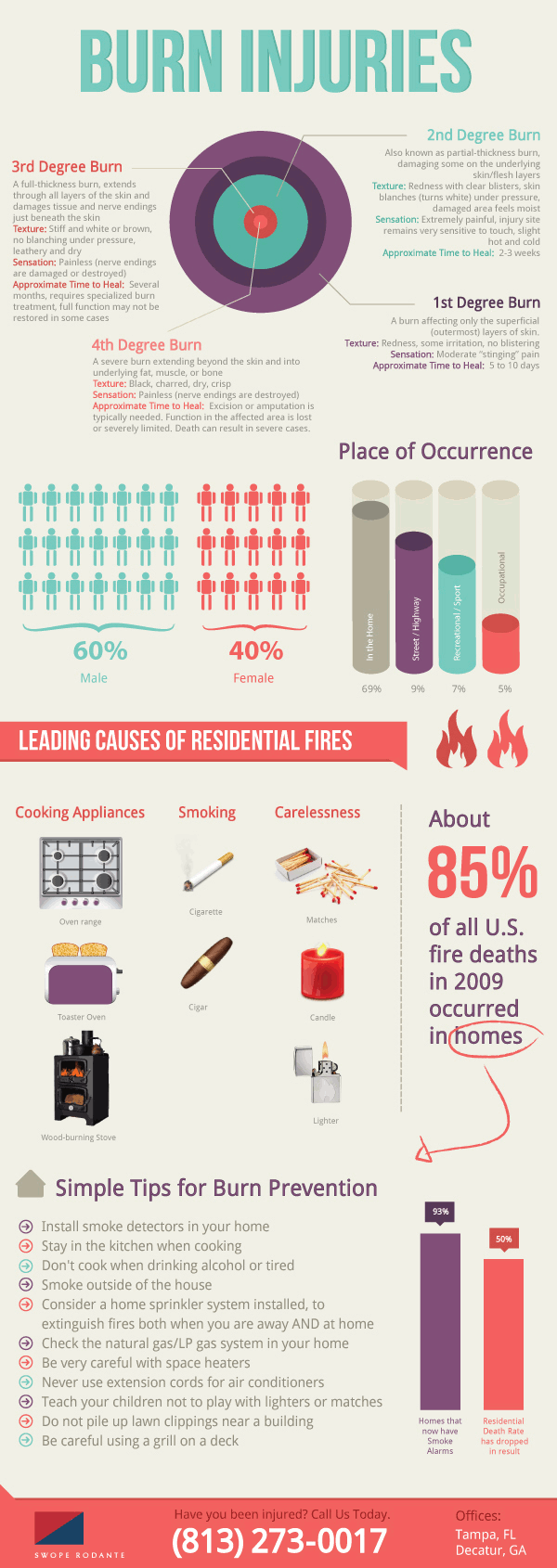Burns can be incredibly painful, but they often range in severity. Not every burn looks the same or requires the same amount of medical attention. In order to make sure that you obtain the right type of treatment, you must know the distinctions between the different degrees of burns. It is important to know that 1st, 2nd and 3rd degree burns have similarities, but are primarily different. In order to become aware of the differences, you must learn more about each level of burn.
What Is A Burn?
A burn can be caused by many different things. Some of the most common causes of burn include the sun, fire, hot liquids or radiation. To determine the level of severity for each burn, burns are broken down into 3 basic classifications. These 3 classifications are referred to as 1st, 2nd and 3rd degree burns. The type of degree that a burn is assigned has a direct correlation to the severity of the burn.
What Is A 1st Degree Burn?
The type of classification is reserved for burns that are primarily minor. Most burns that are classified as 1st degree hot liquids and grease. Small amounts of hot liquids or grease hitting the skin can result in minor burns that are described as 1st degree. Cigarettes are also another common cause of this burn type. This type of burn involves some redness of the skin, and swelling, but only the most outer layer is affected. Simply running cool water over the burn for about 10 minutes and placing an aloe cream over the burn will result in relief.
What Is A 2nd Degree Burn?
A 2nd degree burn is more severe than a 1st degree burn and can be caused by sunburn or chemical exposure. This type of burn involves the second layer of skin being affected and results in some blistering of the skin. The type of treatment that is required forthi stype of burn varies, but you are often recommended to apply cool water and cover all blisters to ensure that infection doesn’t occur.
What Is A 3rd Degree Burn?
This type of burn classification is reserved for the most severe burns. The typical causes of 3rd degree burns are radiation or corrosive chemical exposure. These type of burns affect the third layer of skin and result in scarring. Medical attention for 3rd degree burns is required.
